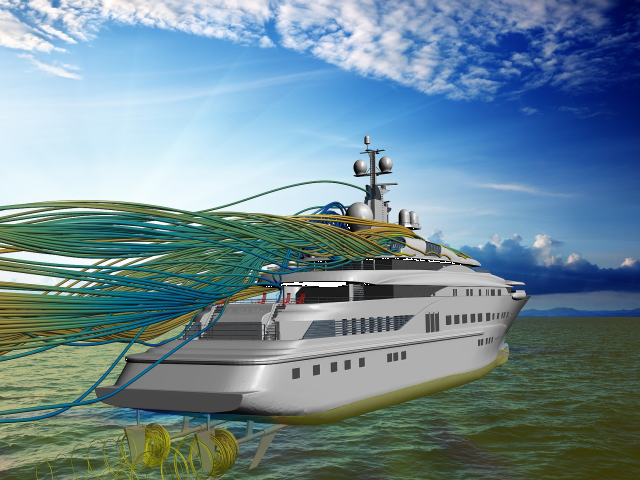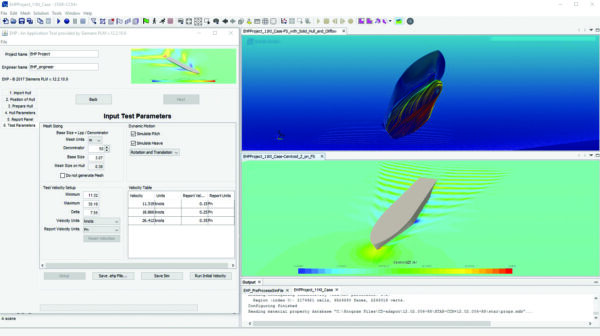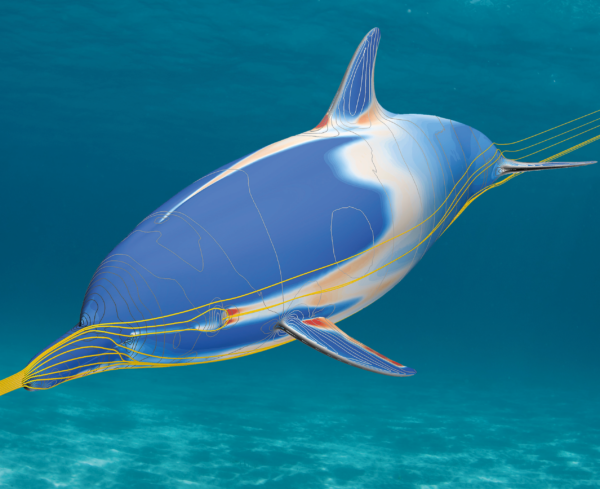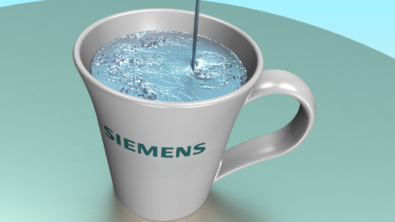Grab a coffee and catch up on marine CFD!

Learn how marine CFD is being used for hydrodynamics, aerodynamics, propulsion and… dolphins?
Do you, like me, enjoy taking a break from work every now and again, with a cup of coffee? When I do this I like to browse the news and find out what is happening in the world. Sometimes, though, the news can be a bit depressing. If that is the case for you, why not spend your next coffee break catching up on marine-related good news?
Download our ebook and find out what is happening in the world of marine CFD. And if that sounds a bit too work-related for your coffee break, read on to find out more about dolphins…
Multidisciplinary simulation and design exploration in the marine industry

Our recently-refreshed eBook contains over a dozen articles and case studies focusing on marine CFD. Download it now and you can flick through at your leisure. Read how companies are successfully using CFD simulation and design exploration to drive ship development and increase performance and efficiency. Topics include:
- The benefits of a numerical towing tank approach
- Propeller cavitation analysis with CFD
- How hydrodynamic hull optimization saved one company $30 million a year
- Aerodynamic analysis, FSI and optimization for sails
- Designing energy saving devices using CFD
- An interview with the consultancy team behind one America’s Cup contender
Make marine CFD easy with a tool designed specifically for naval architects
Several of the case studies use the Hull Performance Workflow tool. This add-on to Simcenter STAR-CCM+ is designed for naval architects. It provides a guided process for running hydrodynamic simulations of clean hulls. Using this tool makes setting up your CFD simulations quick, easy, and repeatable. It even outputs your results into PowerPoint for easy review.

Our old friend Dr. Mesh gives full details in an article in the eBook, or you can find out more in this fact sheet. Of course, as the tool is built on Simcenter STAR-CCM+, it is easy to move on to more complex simulations. Simply open the output file in Simcenter STAR-CCM+ and you are ready to go.
Design exploration takes you from one to hundreds of simulations
For more than 100 years ship designers have built ships using the evolutionary approach – one small improvement per design generation. Within the last few years CFD has provided a ground-breaking technology to enable the revolutionary approach – true optimization for every design generation.
Dr Richard Korpus, ABS
If you are interested in making your ship design as efficient as possible, look at Dr. Richard Korpus’ article on the use of CFD in a marine classification business. Improving a ship’s efficiency requires looking at hull resistance, propulsive efficiency and engine performance, as these are all linked together. But how can you optimize your ship to meet the multiple, sometimes conflicting, requirements from these different aspects? This is where design space exploration comes in. Automated design exploration takes CFD simulation to the next level by analyzing many variations in design and evaluating them against your requirements. The search strategy automatically adapts as it learns more about the design space. It focuses in on suitable design variants.
Using design exploration means you can investigate the performance of hundreds of designs, and confidently choose the best option for your requirements. You can find out more about this in our recent webinar on Simulation-driven ship design.
The hydrodynamics of dolphins

And finally, one of my favorite stories in the eBook: Numerical simulation of the laminar-turbulent transition on a common dolphin. This study was carried out by students at the University of Stuttgart, who wanted to investigate the drag on a dolphin’s body. They used Simcenter STAR-CCM+ to simulate the flow of water around a dolphin’s body. This meant they could investigate where the flow switched from laminar to turbulent. Laminar flow is lower in drag, so if a dolphin can actively keep the flow around its body laminar it can reduce friction and therefore swim faster. You’ll have to read the complete article to find out their conclusions. While this may seem like a fun story, it does showcase Simcenter STAR-CCM+’s turbulence models. For more details on marine-related turbulence, watch this webinar.
Try Simcenter STAR-CCM+ for free
If you have been inspired by the articles in the ebook, sign up for a free, 30 day trial of our marine CFD software, Simcenter STAR-CCM+. The trial includes everything you need to instantly start running CFD simulations. You can launch the software in your browser in just minutes – no installation necessary. And we have included 4 marine-specific tutorials which guide you through using the software. Try it today, and by the end of your next coffee break you can have your first CFD results!


